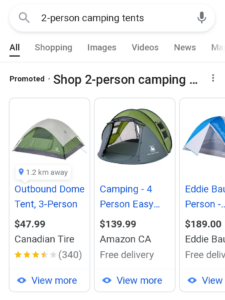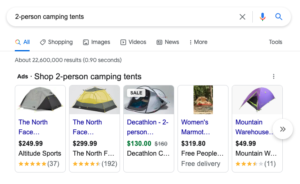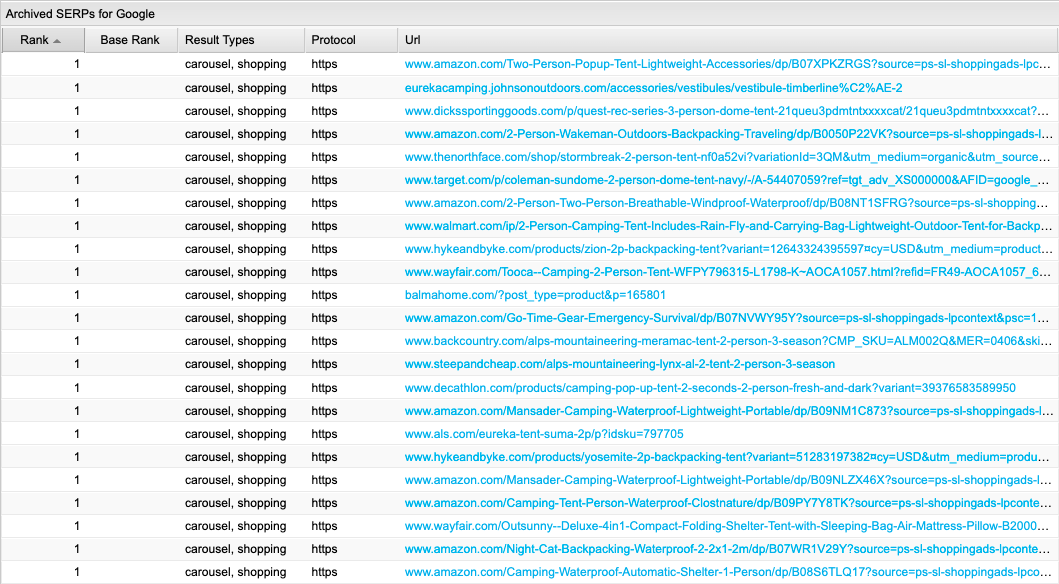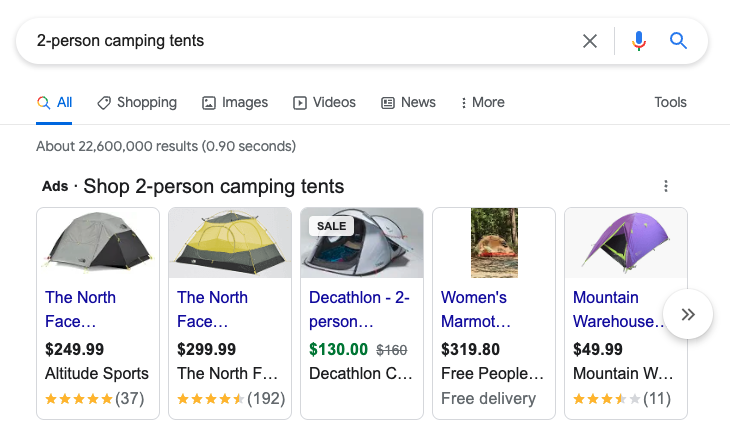Over the past few months, we’ve noticed that the shopping carousel SERP feature is once again primarily a paid placement. Because of this, we’re investigating whether to return the result to a “paid” classification in STAT that gets attributed to google.com, or to stop tracking the feature entirely. And we’d love to get your feedback in this short survey.
In the meantime, as a way of helping mitigate some of the problems this SERP feature is causing, next week we will be shortening the number of ranking URLs we return for each shopping carousel result — we’ll now only list up to three on mobile and five on desktop.
You may see an initial dip in your metrics as a result of this change, but are likely to see more stability moving forward if you appear in a lot of shopping carousels.
Impacts to share of voice and other metrics
Originally, when shopping results were static blocks of paid advertising, we attributed their ranking URL to Google. Over time, shopping results adopted the carousel style and started including more and more organic listings. This prompted us to attribute their ranking URLs to the individual sites in order to reflect the organic opportunity they provided.
Today, it appears that Google has come full circle and shopping carousels are strictly paid placements once more. Google has also dramatically increased the number of results it returns in a single carousel, which can create equally dramatic swings in share of voice metrics in particular.
As an example, let’s look at this shopping carousel for the keyword [2-person camping tents] and pretend it’s the only place we appear on this SERP:
When a shopping carousel sits at the top of the SERP, it’s one thing for us to appear in its first few results and have our ranking averages and share of voice metrics reap the rewards of our advertising spend.
However, if we’re the 22nd URL in a list of 23, getting a first place rank doesn’t exactly accurately represent how visible we are on the SERP. Plus, we’re much more likely to fall out of the carousel the further along in it we sit. So, while one day our share of voice reflects a first place rank, the next day it drops to zero as we drop out of the carousel.
By only returning the number of carousel items seen on the average screen — research tells us that’s three on mobile and five on desktop — metrics will more accurately reflect what searchers engage with on the SERP and will be less likely to fluctuate. This will also shrink the visual gap in the Archived SERPs tab between rank and base rank when these carousels are extra lengthy.
Attribute shopping carousel results to Google again or nix them entirely
Since STAT used to handle the old paid shopping boxes by returning a single ranking URL attributed to google.com, we are investigating whether to make that change once again.
Doing this will reduce both the weight that shopping carousels have on your rankings and the strong influence they have on share of voice — you will be able to remove them from the mix by de-selecting Google — making it easier to monitor these metrics against your competitors. This change will also significantly close the visual gap between rank and base rank in the Archived SERPs tab.
Another option is to treat shopping carousels like we do many other ads and ignore them entirely. This means the SERP feature will no longer appear anywhere in STAT. It won’t contribute to any metrics, but you also won’t know if it’s on your SERPs.
If you feel strongly about either of these two choices — or would like us to keep tracking a condensed carousel like an organic result — please fill out this quick survey or get in touch with us at support@getstat.com to let us know why.
Cheers,
The STAT team





